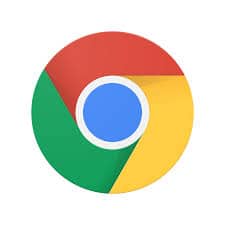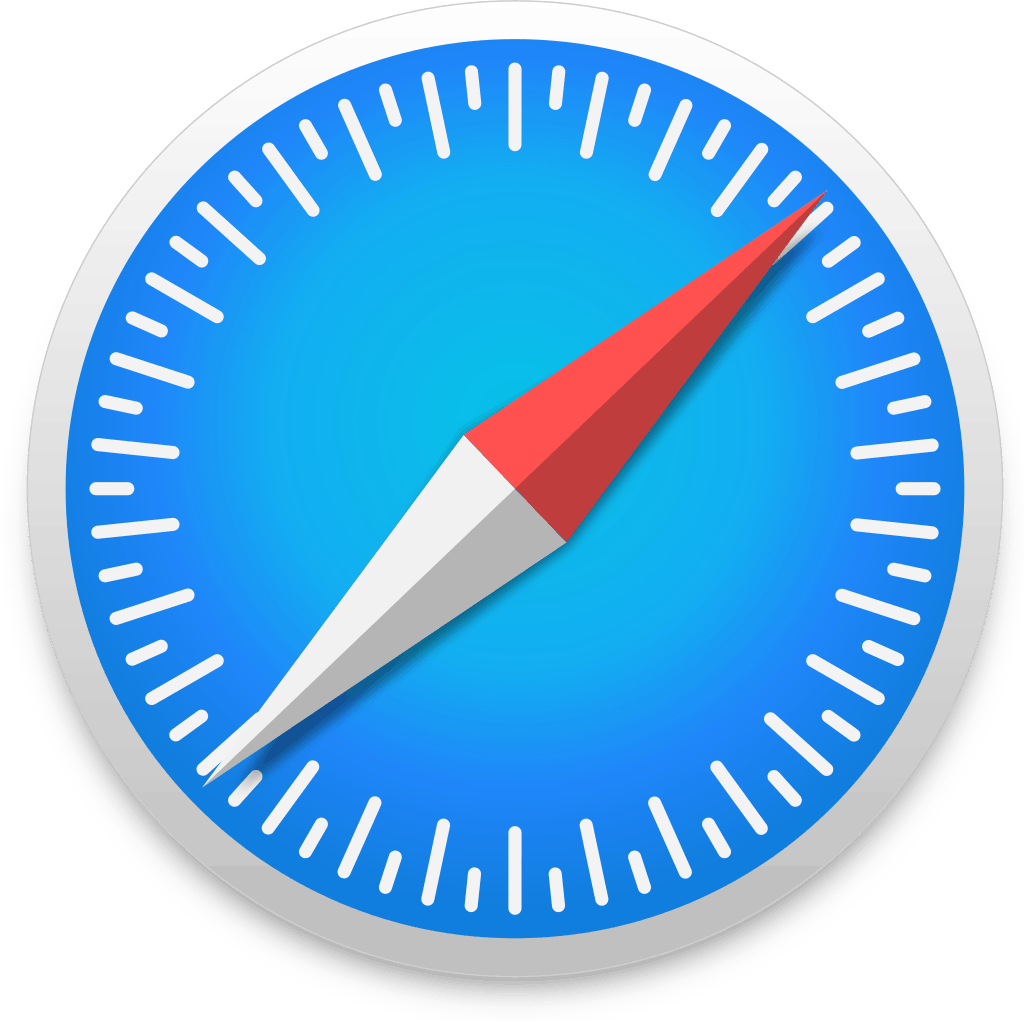If you’ve ever dreamt of blasting off into the great unknown, you will get a taste of an astronaut’s life on Mission: SPACE.
Choose your experience – the Green Mission to Earth (a less intense ride that does not spin) or the Orange Mission to Mars (a centrifuge that spins and tilts to simulate the speed and G-forces of a spacecraft launch and reentry) – then your training begins on the X-2 Deep Space Shuttle at the International Space Training Center (ISTC).
As part of your mission, you’ll assume one of four important roles: navigator, pilot, commander, or engineer.
Make sure you pay attention during your flight as cadets will be instructed to initiate a mission-critical sequence, and your crew is counting on you to successfully help complete your mission to space.
Join the countdown to blast off with our complete guide to Mission: SPACE.
Mission: SPACE Quick Facts
Location
Mission: SPACE is between Guardians of the Galaxy: Cosmic Rewind and Test Track.
You can see Mission: SPACE on the map below.
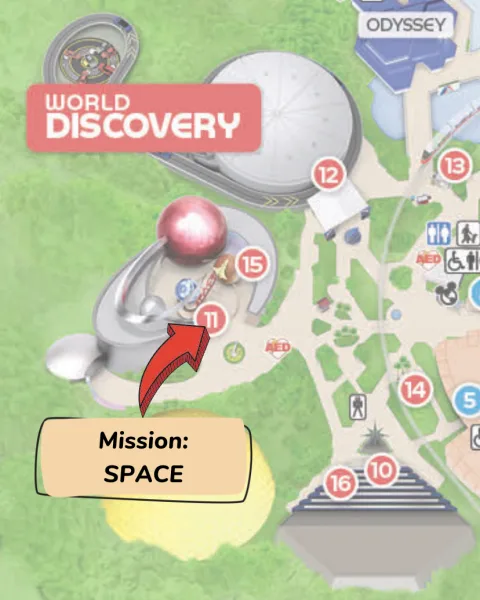
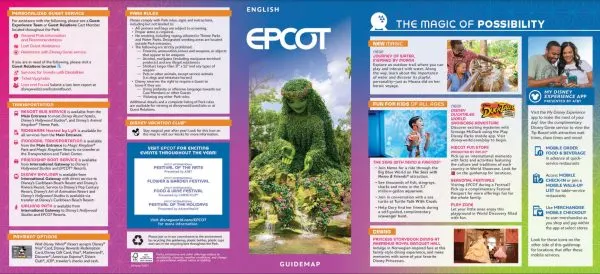
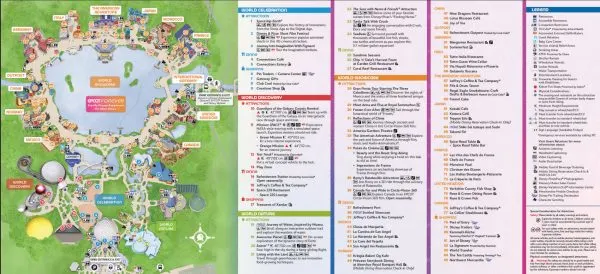
How to Ride Mission: SPACE
Both the Green and Orange versions of Mission: SPACE have a Standby Line and a Lightning Lane. There is no Single Rider Line.
Eligible guests can also ride Spaceship Earth during Early Theme Park Entry and Extended Evening Theme Park Hours.
Do I need to use Genie+ at Mission: SPACE?
While Mission: SPACE does offer Genie+, it is not an early priority when making your park plans as G+ availability rarely runs out.
If you want to avoid long lines, your best bet would be to ride this attraction during the first two or last two hours of the day.
Be sure to check out our Epcot touring strategies for more Genie+ advice.
Rider Switch/Child Swap
As you must be at least 40″ to ride the Green Mission: SPACE and 44″ to ride the Orange Mission: SPACE, this attraction does offer Rider Switch.
Rider Switch is Disney’s system that allows guests with small children to take turns riding bigger rides, while another person/people wait with the little one.
Guests who are too small, experience motion sickness, or prefer not to ride Mission: SPACE can check out the Advanced Training Center that offers a play area for kids and interactive games and activities.
You can learn more about Rider Switch via our handy guide.
What to Expect when you Ride
Queue
To enter the queue for Mission: SPACE you walk right into a replica of the planet Mars which houses a space training center.
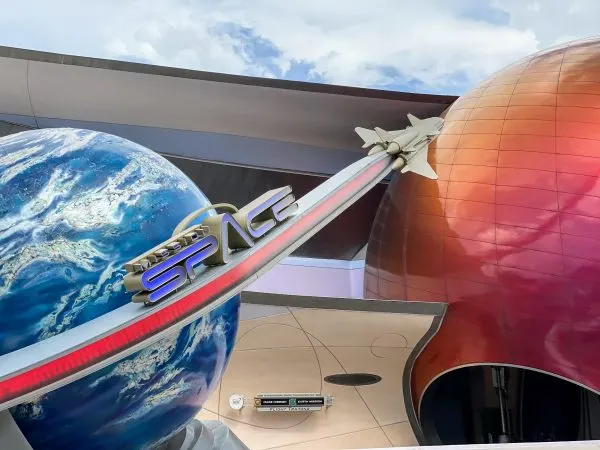
As you enter, you have to choose either the Orange Mission (the more intense ride) or the Green Mission.
In the space training center, you’ll view a training capsule; a replica space vehicle living quarters, a model spacecraft, and a Lunar Roving Vehicle on loan from the Smithsonian Institution.
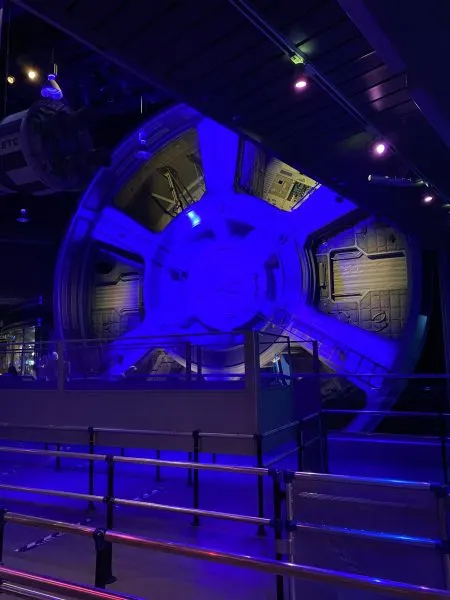
You’ll also see plaques commemorating key moments in the history of space travel, both real such as Yuri Gagarin becoming the first man in space on April 12, 1961, and Bill Shepard, Yuri Gidzenko, and Sergei Krikalev launching Expedition 1 to the International Space Station on October 31, 2000, and fictional, like Expedition 205 launching the first family into space on September 1, 2030.
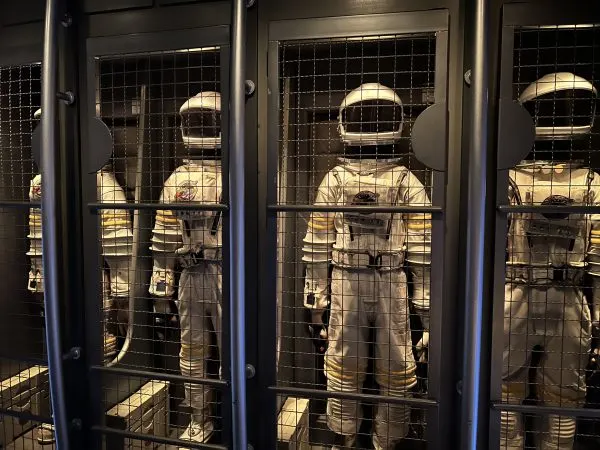
You’ll also see props from the 2000 film Mission to Mars, including the rotating “gravity wheel” from the predecessor X-1 spacecraft, a model of which hangs from the ceiling.
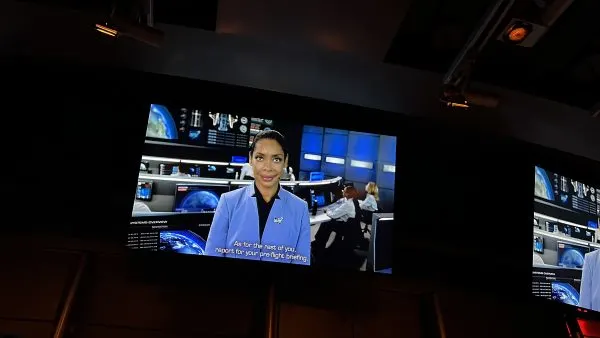
Riders are arranged into crews of four before watching an introductory video by the ISTC’s Capsule communicator (or Capcom), played by actress Gina Torres.
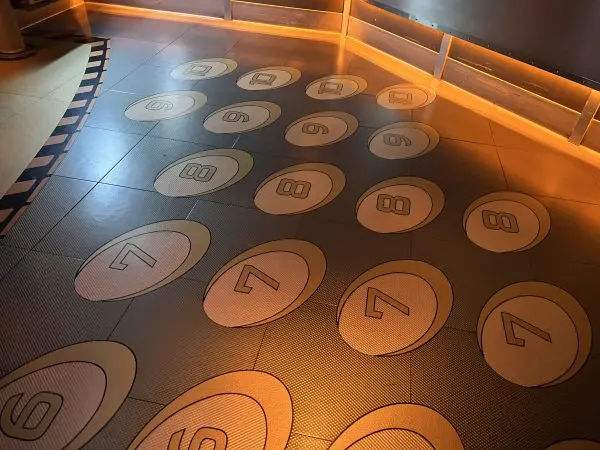
Before boarding, each rider is assigned a role (navigator, pilot, commander, or engineer) and given two tasks to perform during the mission.
You will be directed to a row number where you will stand before the entrance to your ride vehicle. When it is your turn to board, the door will open and you will file inside to your seat for your mission to space!
Ride Vehicles
At Mission: SPACE, there are four separate centrifuges, each with 10 capsules holding four riders. Each rider gets their own individual padded chair with armrests and over-the-head padded shoulder restraints.
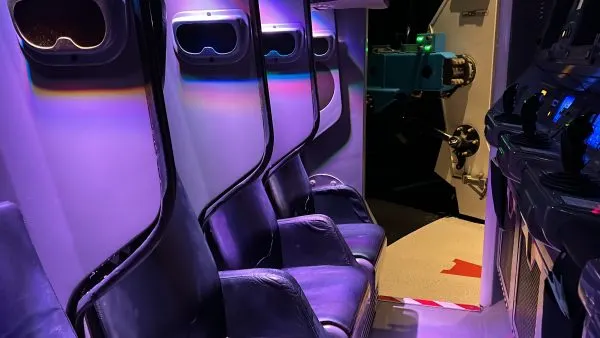
As the ride begins, the vehicle closes around guests, scooting them closer to their seperate screens. Motion sickness bags are available inside the vehicle.
Accessibility Information
On Mission: SPACE, guests in ECVs and wheelchairs must transfer to the ride vehicle. Be sure to ask a Cast Member for assistance.
Those who are uncomfortable in enclosed dark spaces or simulators should not ride and the seating and restraints of Mission: SPACE may prohibit guests of certain body shapes or sizes from riding.
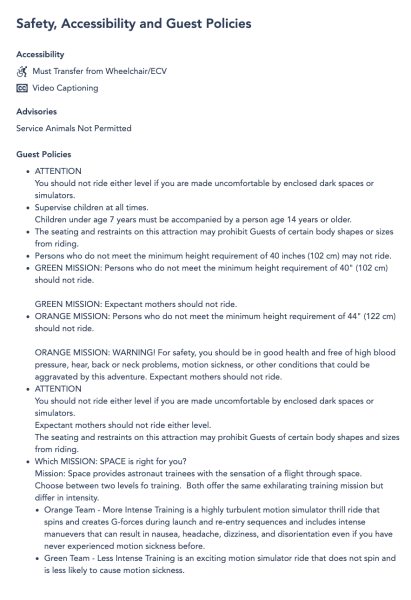
For the Green Mission, you must be 40″ or taller to ride. For the Orange Mission, you must be 44″ or taller to ride.
You must also be in good health, free from high blood pressure, back or neck problems, motion sickness, or other conditions that could be aggravated by this adventure.
Expectant mothers should not ride either level. Video Captioning is available for those who need it. Service animals are not permitted on Misison: SPACE.
Motion Sickness
Both the Green Mission: SPACE and the Orange Mission: SPACE are simulators that mimick the feeling of blasting off into space.
The Orange Team version is more intense and features lots of turbulence, spinning and creates a g-force experience during launch and re-entry sequences. This can result in nausea, headache, dizziness, and disorientation, even if you have never experienced motion sickness before.
The Green Team experience is a less intense ride that does not spin and is less likely to cause motion sickness.
For more information on attractions that may cause motion sickness, you can check out our guide.
On the Ride
If you prefer to experience Mission: SPACE without spoilers, you may want to skip this section.
Choose your mission – journey to Mars with the Orange Mission or orbit the Earth on the Green Mission. Take to the controls as one of four positions: Commander, Pilot, Navigator, and Engineer as you experience what it’s like to be an astronaut!
Step into the shoes of greats like Buzz Aldrin, Neil Armstrong, and John Glenn as you take your seat aboard the fictional X-2 Deep Space Shuttle.
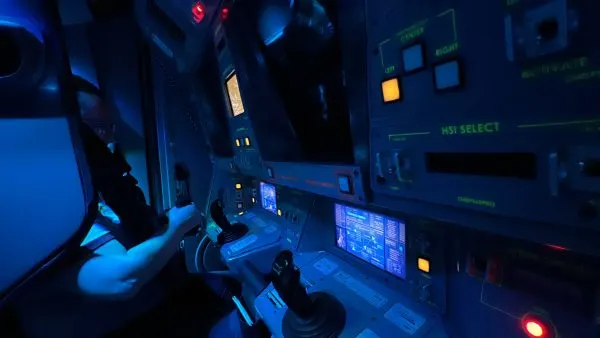
In the pre-show, you are instructed on your role as part of the crew on this mission. Pay attention, because it’s up to you to complete your assignments by pushing buttons (spoiler alert: if you don’t push them, your experience will not be affected).
Video screens in your ride vehicle show you what you would be experiencing on a real rocket launch but what you see and how intense your experience is depends on which mission you choose.
Orange Mission: SPACE is an out-of-this-world trip to Mars that uses a centrifuge that spins and tilts to simulate the speed and G-forces of a spacecraft launch and reentry.
On this version you will undergo a liftoff from the ISTC, a slingshot around the moon, followed by simulated hypersleep (to pass the lengthy time required to reach Mars), and finally you’ll land on Mars!
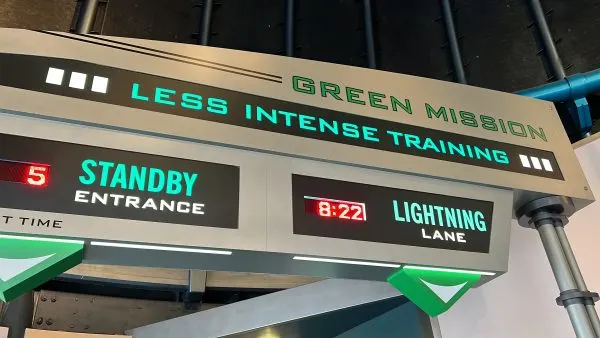
If you choose to ride the Green Mission: SPACE, you’ll experience a gentler, more family-friendly adventure.
This time, the motion simulator offers light movement and doesn’t spin so it’s less likely to cause motion sickness. During the Green mission, you will liftoff from the ISTC, take an orbiting tour of the Earth, and then descend back to the ISTC where you’ll use your joystick to manually navigate your vehicle through a thunderstorm.
As you leave the attraction, make sure you check out the Advanced Training Lab interactive play area, and Mission: SPACE Cargo Bay gift shop.
Is Mission: SPACE Kid-Friendly?
As the minimum height is 40″ to ride the Green Mission: SPACE and 44″ to ride the Orange Mission: SPACE, this attraction is for older kids, tweens, teens, and adults.
Guests who are too small or would prefer not to ride Mission: SPACE can hang out in the Advanced Training Center that offers a play area for kids with interactive games and activities, while the rest of the family rides.
Strollers
Strollers are not allowed in most queues at Walt Disney World and the same goes for Mission: SPACE.
Instead, you’ll need to leave your stroller in the designated stroller parking area outside the queue entrance at Mission: SPACE.
History
Mission: SPACE was built on the former site of the Horizons attraction, which gave its guests a peek at what life might be like in the future. The ride closed in 1999.
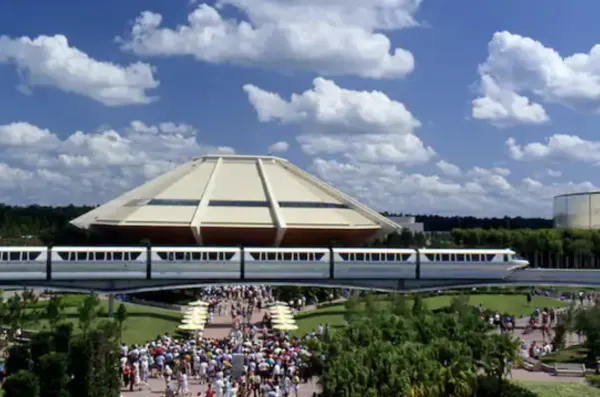
Mission: SPACE debuted in a soft opening in June 2003. Its grand opening on October 9, 2003, was attended by then-Disney CEO Michael Eisner, Hewlett-Packard CEO Carl Fiorina, and NASA Administrator Sean O’Keefe.
Also in attendance were several NASA astronauts from the Mercury, Gemini, Apollo and Space Shuttle Programs, and two crew members from aboard the International Space Station.
From 2003 to 2006, Mission: SPACE featured only the more intense (Orange) option. The Green version was added in 2006 after too many guests were complaining of motion sickness on the ride.

While Mission: SPACE was originally sponsored by Hewlett-Packard, they did not renew their sponsorship in 2015 and HP’s branding was removed in 2015.
The attraction closed for refurbishment on June 5, 2017. During the 2017 D23 Expo, officials announced that the Green Mission would be given a new video simulating a flight around the Earth. The Orange Mission would receive updated graphics, but still keep the Mars mission as its focus.
The attraction reopened on August 13, 2017.
Other Fun Details
- Mission: SPACE replaced the Horizons attraction in 2003. To pay homage to the original ride, Mission: Space features several tributes to Horizons. You’ll find the Horizons logo on display at the center of the rotating gravity wheel in the queue and on the bottom right-hand corner of some of the screens in the pre-show. The text “Brava Centauri”, the location featured in Horizons, is shown during the safety briefing outside the capsule and on the front of the cash register counter in the gift shop on the way out of the attraction.
- Mission: SPACE was the second Disney World attraction based around a mission to Mars. The aptly-named Mission to Mars was a theater-in-the-round presentation in the Magic Kingdom from 1975 to 1993.

- Also in the queue, you will find a tribute to the Magic Kingdom’s Mission to Mars and Flight to the Moon attractions, both of which are closed. In the mission control room, the footage of the bird landing was reused from the pre-show of those attractions.
- Mission: SPACE was Epcot’s second simulator after Body Wars, which was located in the former Wonders of Life Pavilion. Body Wars opened in 1989 and closed in 2006.
- Actor Gary Sinise, who starred in the space film Mission to Mars, portrayed Capcom from the attraction’s opening day until it’s renovations in 2017. Actress Gina Torres replaced him in the role.
- Mission: SPACE is located in Planetary Plaza and the building features replicas of the Moon, Earth, Jupiter, and Mars. The curved facades represent flight and orbits.

